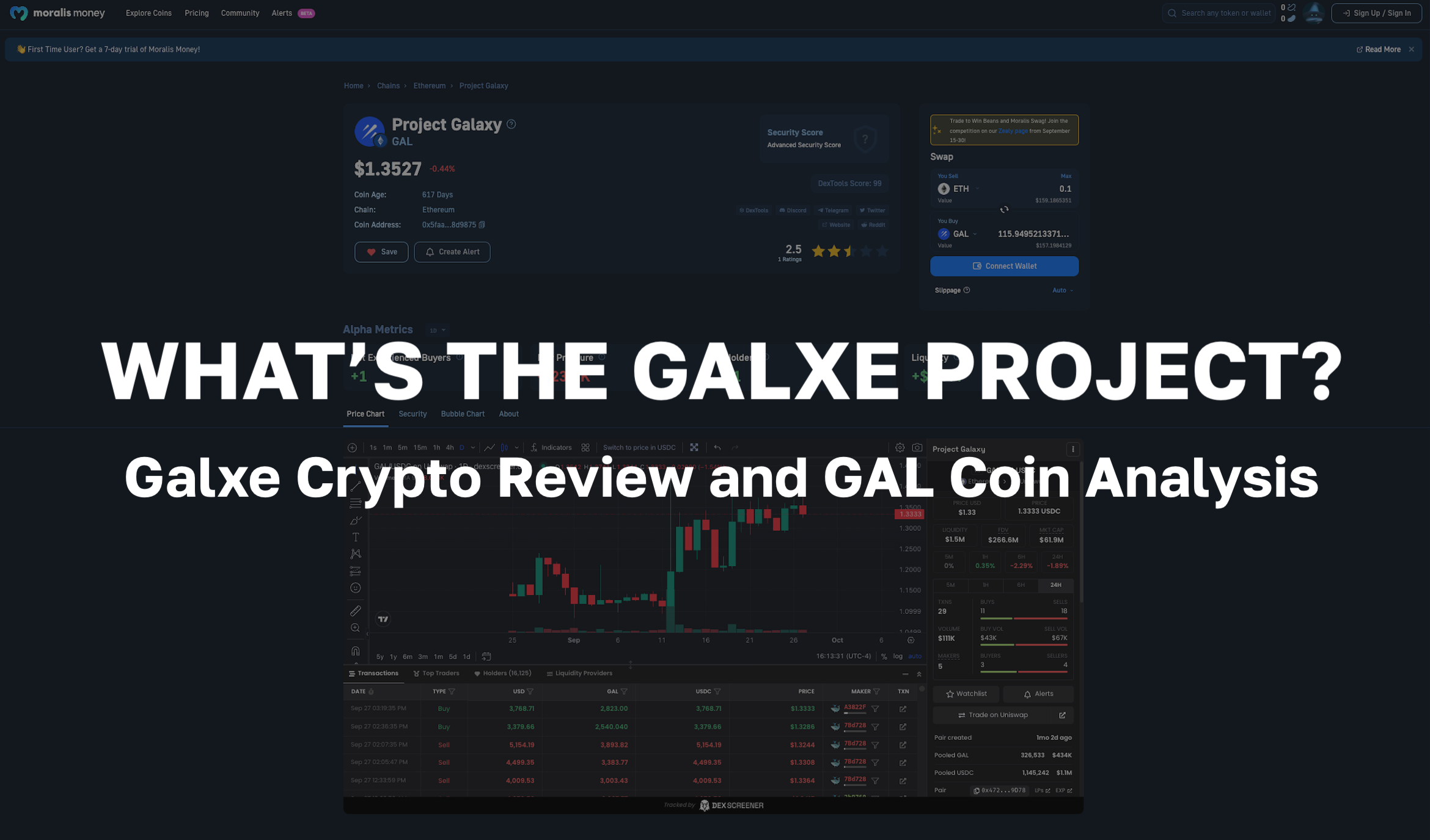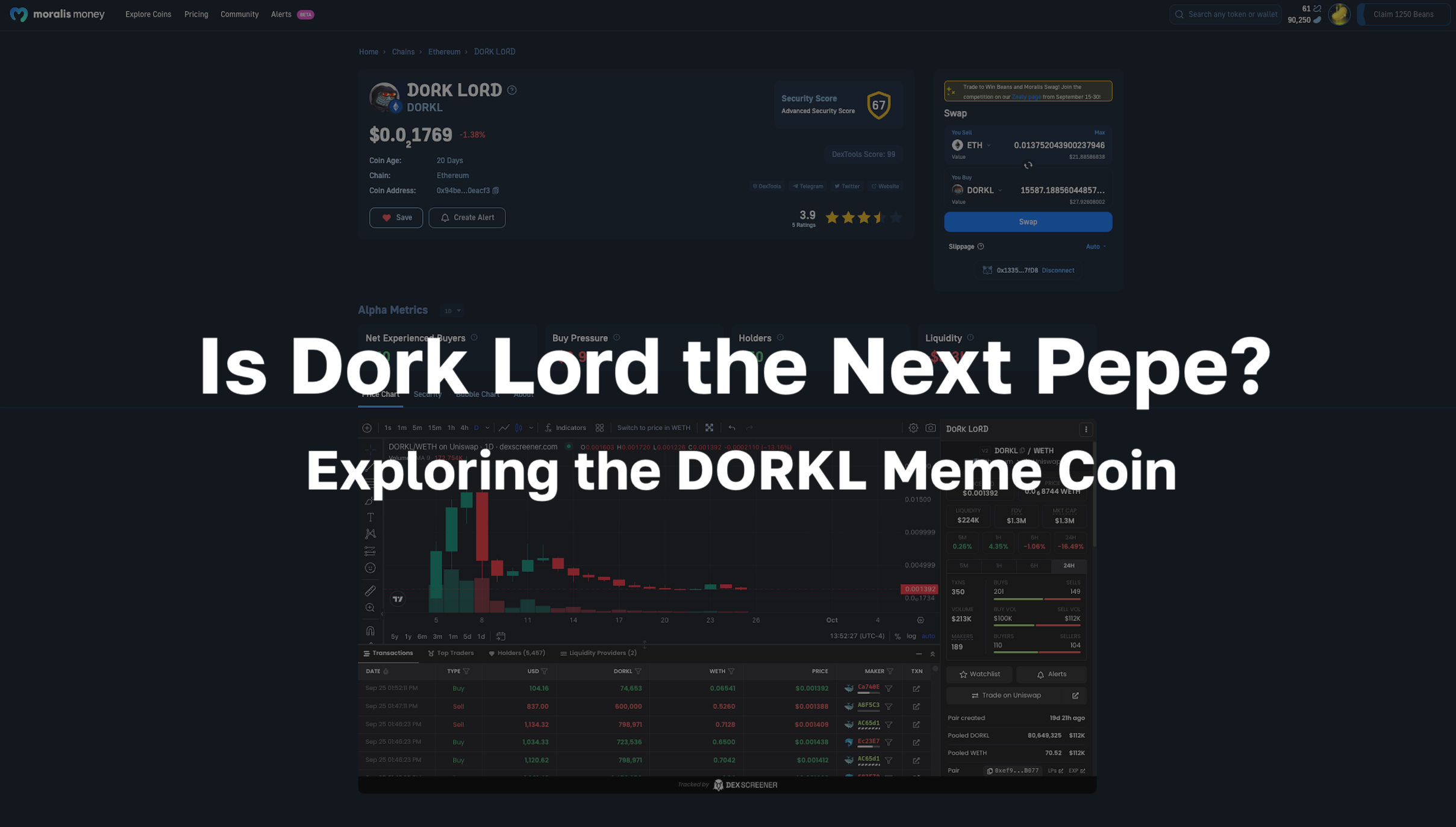Bitfarms is a Bitcoin mining and infrastructure firm based in Canada. Since the all-time high of November 2021, the Bitfarms stock price has been in a downward trend in line with the declining price of Bitcoin. However, investors were pleased with financial results for the fourth quarter of 2021, which were released in March of 2022. Thanks to the use of 100% renewable and green energy, Bitfrms saves a substantial amount of money on electricity. At a time when energy prices are soaring, this gives Bitfarms a significant edge against the competition.
In this article, we’re going to dive deep into the Bitfarms mining company. We’ll discuss the Bitfarms roadmap for 2022 and why mining companies are becoming so popular among investors.
Moralis Academy is the number-one Web3 and blockchain education suite online. If you want to gain a firm understanding of blockchain and cryptocurrencies, check out the Blockchain & Bitcoin 101 course. This course teaches students about consensus mechanisms, mining, staking, and more.
Join our community of over 30,000 students and start your blockchain journey today with Moralis Academy! Additionally, save our “Blockchain Explained” and “What is Crypto?” articles for later reading!
What is Bitcoin Mining?
Bitcoin is the pioneering cryptocurrency introduced in 2009 by the pseudonymous developer(s) Satoshi Nakamoto. If you’re unfamiliar with Bitcoin, be sure to check out our “What is Bitcoin?” article. Mining is the process used to validate transactions on the Bitcoin network. Bitcoin miners maintain the integrity of the network by only validating legitimate transactions. When these transactions are validated, miners put them into blocks, which are then appended to the blockchain. In return, Bitcoin miners receive newly minted Bitcoin (BTC) rewards as a reward for their “work”.
There needs to be a framework for every node in the network to agree on the validity of transactions. This framework is what we call a consensus mechanism. The Bitcoin network uses a consensus mechanism called Proof-of-Work (PoW). In order to determine the legitimacy of transactions, Bitcoin miners must expend large amounts of computational resources. Miners compete against each other to solve a highly-sophisticated math problem. The first miner to complete the puzzle earns the right to add that transaction to their block and earn the relevant block rewards for doing so.
In PoW mining, miners have a financial incentive to only validate legitimate blocks. If they validate illegitimate blocks, the entire network will instantly be made aware. This is because every node in the network shares a copy of the same ledger containing every transaction on the Bitcoin blockchain. Any miner found to validate illegitimate blocks would lose their block rewards and could be excluded from the network.
The term “mining” refers to the traditional process of extracting precious metals and entering them into circulation. This is because Bitcoin shares some of the properties of gold, such as scarcity and divisibility. However, there can only ever be 21 million Bitcoin in existence.
Bitcoin Proof-of-Work (PoW) Mining
As we discussed previously, PoW mining acts as an incentive for network participants to act honestly. This enables the Bitcoin network to build a decentralized financial ecosystem without the need for a central authority or intermediaries. Every network participant is responsible for effectively auditing each transaction that enters the public ledger to avoid funds being used more than once for the same transaction in a situation known as “double-spending”.
Bitcoin PoW miners use expensive specialized machinery and incur ongoing electricity costs. PoW miners compete in establishing a 64-digit hexadecimal number known as a “hash”. Once a hash has been generated that equals the “target hash”, that miner can append a block of verified actions to the Bitcoin blockchain and receive the block rewards. It takes trillions of attempts to find this hash, which means Bitcoin miners have to spend a lot on electricity.
Once appended, transactions and blocks are immutable, meaning they cannot be altered. In order to even attempt to alter these transactions, an attacker would need at least 51% percent of the computational resources of the entire Bitcoin network, making it practically impossible. However, a 51% attack on the Bitcoin network is theoretically possible and has been effective in attacks on smaller PoW blockchains like Ethereum Classic).
What is Bitfarms?
Bitfarms Ltd. is a vertically-integrated cryptocurrency mining and infrastructure company based in Canada. The company boasts “strong returns on capital” for investors using 99% green and renewable energy sources in partnership with electrical contractor Volta Electrique. At the time of writing, Bitfarms operates with seven mining facilities in Canada, the US, and Paraguay. Also, the firm has plans for an additional four sites, which will expand into new regions. Additionally, Bitfarms boasts on-site monitoring and repair labs and 100% self-owned electrical contractors.
Unlike some crypto mining firms, Bitfarms owns 100% of the mining equipment and infrastructure it uses. Also, Bitfarms is the first cryptocurrency mining company to file a full prospectus with the Ontario Securities Commission (OSC). According to Bitcoin Treasuries, Bitfarms is the fifth-largest institutional holder of Bitcoin and the second-largest holder of Bitcoin among mining firms after Marathon Digital, with 5,243 BTC under management equaling .025% of the total Bitcoin supply.
Environmental Impacts of PoW Mining
Despite the advancements in green energy usage throughout the crypto industry, Proof-of-Work (PoW) mining still has a negative environmental impact and carbon footprint. According to the scientific journal Joule, data from 2019 suggest that Bitcoin has a carbon footprint in the region of 22 to 22.9 metric tons of CO2. This output is similar to that of a country like Jordan or Sri Lanka.
However, there are several methods available for offsetting the carbon footprint of the Bitcoin network. One such method is carbon credits. Carbon credits are a tradeable permit that represents the right to emit an amount of carbon dioxide or greenhouse gasses and are an effective way of lessening the impact of the vast amounts of electricity Bitcoin miners consume. When coupled with a reduction in fossil fuel use, carbon credits could significantly improve the environmental footprint of the Bitcoin network.
That said, reducing the environmental impact of Bitcoin mining is only half of the battle. Moreover, the use of electricity in the Bitcoin mining process needs to be optimized. Reducing waste while establishing sustainable energy sources is paramount to the future of the network.
How Does Bitfarms Compare to Other Mining Companies?
Bitfarms has the second-highest amount of self-mined Bitcoin revenue stock of any Bitcoin mining company after Marathon Digital. Hut 8 is another Bitfarms competitor also based in North America. Bitfarms has 137MW of built-out mining infrastructure while Hut 8 has 121MW and Marathon Digital has 105 MW.
Also, Bitfarms has an average energy cost of $0.04/kWh, whereas Marathon Digital and Hut 8 pay an average of $0.028/kWh and 0.027/Kwh, respectively. Furthermore, Bitfarms has a hash rate of 3.0 EH/s compared to 1.37 EH/s of Hut 8 and 3.5 EH/s of Marathon Digital. Moreover, Marathon Digital holds 8,133 BTC, whereas Bitfarms holds 5,243 BTC, and Hut 8 holds 5,242 BTC.
The most significant advantage that Bitfarms has over other mining firms is reliable access to inexpensive, renewable energy. This enabled the firm to generate and retain a significant amount of newly generated Bitcoin. Furthermore, because Bitfarms owns all of the mining equipment it uses, the company is able to generate substantial profits in a competitive industry in the face of a global energy crisis.
Why Invest in Bitcoin Mining Companies?
Investing in Bitcoin mining companies allows investors to gain indirect exposure to the price of Bitcoin from their regular investment portfolios. Instead of learning the technicalities of crypto wallets and exchanges, people can invest in the underlying architecture that facilitates Bitcoin production.
During a time when energy prices are at a premium, Bitcoin mining can be inhibitively expensive in many regions, making it challenging to set up a solo Bitcoin mining operation. Accordingly, Bitcoin mining companies take extra care to select their base for operations in geographies with cheap, renewable electricity sources.
How Profitable is Bitcoin Mining?
If you have access to the latest Bitcoin mining equipment, a steady supply of cheap electricity, and a firm understanding of blockchain, Bitcoin mining can be profitable. However, in reality, Bitcoin mining requires constant ongoing expenses and substantial investments. In the past, it was possible to mine Bitcoin using a fairly standard computer. These days, however, it’s extremely difficult to compete with the likes of Bitfarms, Hut 8, and Marathon Digital without a similar army of super-expensive miners.
That said, there are many cryptocurrencies that don’t require such expensive hardware and electricity costs. In particular, cryptocurrencies that use a Proof-of-Stake (PoS) consensus mechanism enable network participants to secure the network using a reasonably modest setup. Rather than spending large amounts of electricity to achieve consensus, PoS blockchains require nodes to lock up (stake) crypto assets. Accordingly, these blockchains are often more accessible for solo mining operations.
The Future of Bitcoin Mining
As electricity becomes increasingly expensive, Bitcoin mining operations need to source sustainable, renewable energy. Many gas and oil companies are using excess energy to mine Bitcoin, which helps them to turn waste and byproducts into crypto. In the future, we can expect to see more bitcoin mining operations innovating in green and renewable energy technologies. Also, mining firms will benefit from partnering with energy companies to lower operational costs.
With such a concentration of hash power in North America, it seems likely that this part of the world will continue to thrive in the Bitcoin mining space. Following an exodus of Bitcoin miners from China in recent years, US and Canadian mining operations are expanding rapidly.
Bitfarms 2022 Roadmap
Bitfarms received a $32 million financing agreement in February 2022 to source new Bitcoin mining equipment. In March 2022, Bitfarms acquired a new location in Sherbrooke, Québec. Production commenced in the same month to develop the site into a new 300 petahash facility called “The Bunker”. The Bunker has an initial capacity of 12 megawatts (MW). This brings the total number of sites in production to eight and the total capacity to 118MW. In April 2022, Bitfarms shares (BITF) were listed on the Toronto Stock Exchange (TSX), marking a significant milestone for the mining firm and the Canadian blockchain community.
Exploring Bitfarms (BITF) - Full 2022 Guide - Summary
In Q4 2021, Bitfarms mined 1,045 Bitcoin (BTC) at an average cost of around $8,000 per BTC. From this, the firm generated $59.6 million in revenue. In Q3 of 2021, Bitfarms 1,051 BTC at an average cost of $6,900 per BTC, generating $44.8 million in revenue. A significant factor in this increase is the ability of Bitfarms to generate 100% green energy. From a total annual revenue of $169 in 2021, Bitfarms made a net income of around $22 million.
Despite the revenue generated from mining Bitcoin, Bitfarms stock was issued to pay for operational costs. Accordingly, Bitfarms can hold most of the Bitcoin it generates on its balance sheet instead of selling or giving it to shareholders. Around 17.6 million shares were issued during Q4 of 2021 for an average price of $6.47, generating net proceeds of around $110 million. At the time of writing, the Bitfarms stock price is trading at around $4.09 US.
As Bitcoin mining companies take an increasingly large share of the total hash rate, it makes sense that these firms are seeing a growing interest from investors. Bitcoin is becoming widely recognized as a valuable investment asset and alternative decentralized currency. If you want to learn about the history of money and currency, check out the Bitcoin Monetary Revolution course at Moralis Academy.
Also, if you want to become a blockchain developer but have zero experience, check out the JavaScript Programming from Blockchain Developers course. Here, we teach students how to build a decentralized exchange (DEX) from scratch using JavaScript. Start your programming adventure today and become blockchain certified with Moralis Academy! Also, check out our “DeFi Explained” and “How to Invest in Crypto” articles to further expand your blockchain knowledge!




